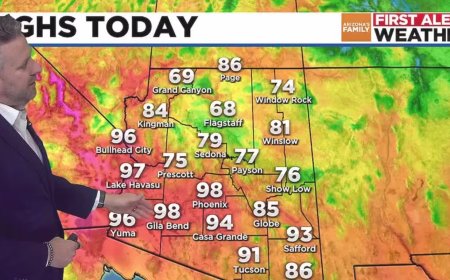Might Canadian Wildfire Smoke Become Part of Our New Summertime Normal? Yes, Experts Say

Introduction: Smoke on the Horizon
In recent summers, many North Americans have become all too familiar with hazy skies, orange sunsets, and air quality alerts — not due to urban pollution, but because of smoke drifting from Canadian wildfires. As wildfires become more frequent and intense, experts now warn that these smoky summers may no longer be occasional anomalies. Instead, they could mark the beginning of a new seasonal norm.
Why Canadian Wildfires Are Becoming More Intense
The Canadian wildfire season typically runs from May to October, but it is starting earlier and lasting longer. The country’s vast boreal forests — which make up nearly a third of its landmass — are highly flammable, especially when dry conditions prevail. According to climate scientists and forestry experts, a combination of rising global temperatures, prolonged droughts, and human activity is fueling larger, faster-spreading fires.
Contributing Factors
-
Climate Change: Higher temperatures dry out vegetation and soil, making forests more susceptible to ignition.
-
Lightning Strikes: Warmer conditions lead to more storms, increasing the likelihood of lightning-caused fires.
-
Forest Management Challenges: Suppression-focused strategies have led to fuel build-up in forests.
-
Urban-Wildland Interface: As development encroaches on forest areas, the chances of human-caused fires rise.
Smoke’s Expanding Reach: From Local Crisis to Continental Concern
Wildfire smoke doesn’t recognize borders. What begins in the forests of British Columbia or Alberta can travel thousands of miles across North America. Cities like Chicago, New York, and even as far south as Atlanta have recently experienced reduced air quality due to Canadian fires. The microscopic particles in wildfire smoke — known as PM2.5 — can penetrate deep into lungs, causing health issues even in otherwise healthy individuals.
Table: Impacts of Canadian Wildfire Smoke
| Impact Type | Description |
|---|---|
| Health Risks | Respiratory issues, cardiovascular problems, increased ER visits |
| Economic Costs | Disruptions to air travel, tourism losses, healthcare expenses |
| Environmental Effects | Damage to biodiversity, soil degradation, contribution to global warming |
| Public Safety | Increased need for evacuations, emergency response strain |
Is Smoke the New Summer Norm?
The trend is worrying. Canada’s 2023 wildfire season was the worst on record, with over 18 million hectares burned. 2024 is already showing early signs of another intense fire season. Experts from Natural Resources Canada and the Canadian Forest Service warn that without dramatic mitigation efforts, this pattern will likely continue and worsen.
Expert Opinions on the Trend
According to Dr. Mike Flannigan, a wildfire specialist at Thompson Rivers University:
"The climate is changing, and wildfire activity is changing with it. We are entering an era where smoke-filled summers could be the norm, not the exception."
What This Means for North America
The long-term implications of annual wildfire smoke events are profound — environmentally, socially, and economically. Major cities will need to invest more in public health advisories, indoor air filtration, and emergency response infrastructure.
Ways Cities and Individuals Can Prepare
-
Invest in Air Filtration: HEPA filters and indoor air purifiers can help reduce exposure indoors.
-
Use Air Quality Apps: Apps like AirNow or IQAir allow real-time monitoring of pollution levels.
-
Wear N95 Masks Outdoors: Especially during high-smoke days to protect against fine particulates.
-
Modify Outdoor Activities: Avoid strenuous activity during air quality advisories.
-
Support Reforestation and Controlled Burns: Long-term forest management solutions are critical.
Conclusion: Planning for a Smoky Future
The likelihood of recurring smoky summers across North America is no longer just a theory — it is fast becoming a reality. The Canadian wildfire crisis is a global climate story, impacting millions well beyond its borders. As the seasons shift and wildfires intensify, adaptation and preparedness will be key. From individual actions to coordinated national responses, our ability to cope with this new summertime normal may well define public health and climate resilience in the coming decades.






























